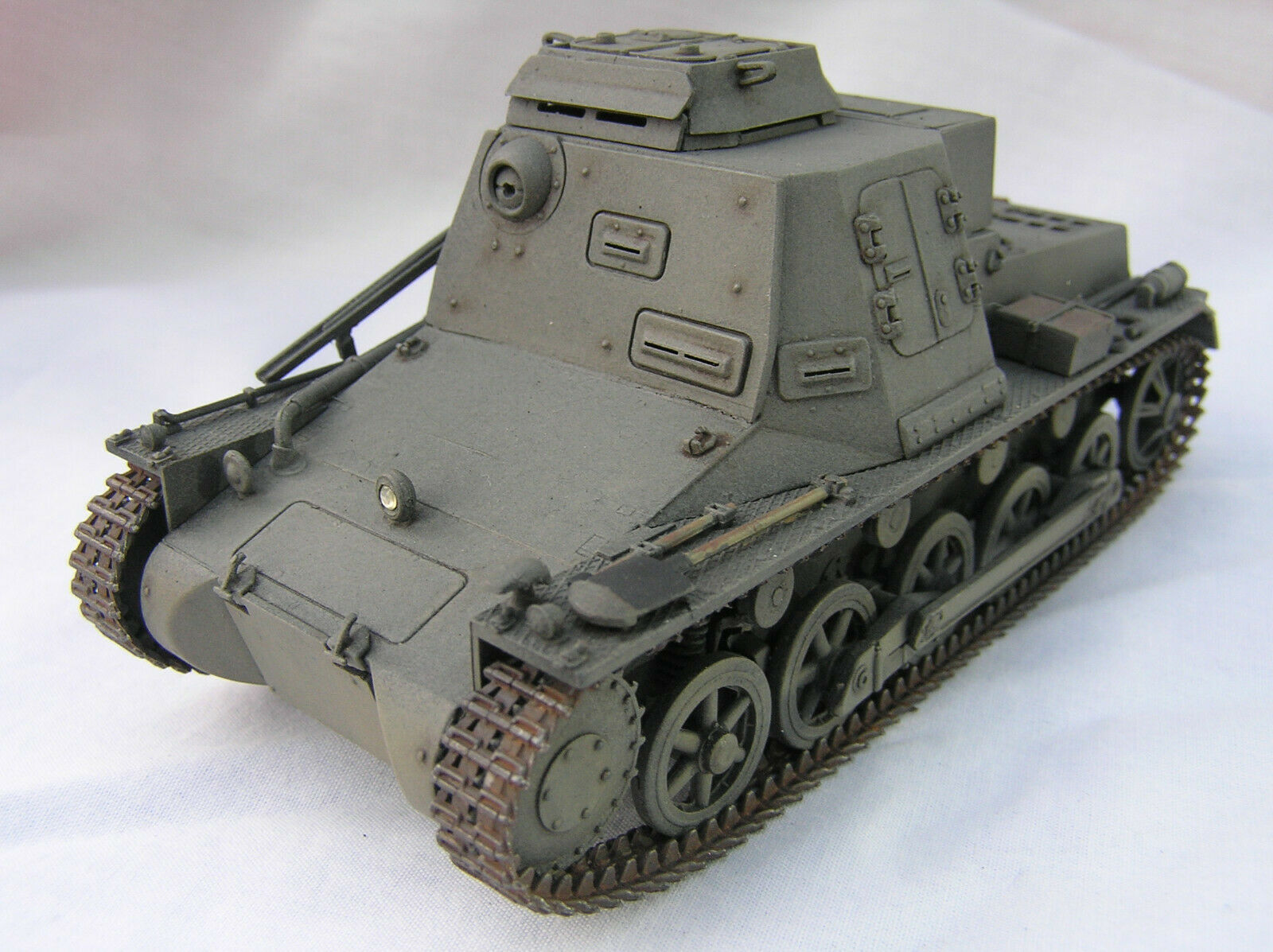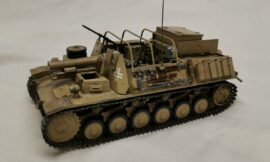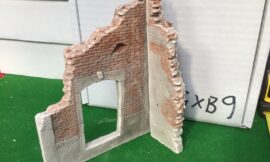The Sd.Kfz. 265 (Kleiner Panzerbefehlswagen) was the first armored command vehicle used by the German Wehrmacht during World War II. Based on the Panzer I Ausf. B chassis, it served a crucial role in providing battlefield communication and coordination for tank units.
Development and Specifications
Origin and Purpose
The Sd.Kfz. 265 was developed in response to the need for mobile command posts that could keep up with fast-moving armored formations. Traditional command methods using unarmored vehicles or static command posts were inadequate for the rapid, fluid tactics employed by the Wehrmacht. Thus, an armored vehicle capable of housing communication equipment and personnel was required.
Design and Armament
- Chassis: The Sd.Kfz. 265 was built on the Panzer I Ausf. B chassis, a light tank originally designed for training but pressed into service in the early war years.
- Armor: It featured armor thickness ranging from 5 to 13 mm, providing protection against small arms fire and shell splinters.
- Armament: The vehicle was typically armed with a single 7.92 mm MG 34 machine gun for self-defense, mounted in a small turret or on a pintle mount.
- Engine: Powered by a Krupp M 305 engine, the Sd.Kfz. 265 had a top speed of around 37 km/h (23 mph) and a range of about 145 km (90 miles).
- Crew: It had a crew of three: a commander, a radio operator, and a driver. The commander’s role was vital as he was responsible for coordination and communication with other units.
Communication Equipment
The primary function of the Sd.Kfz. 265 was to facilitate communication on the battlefield. It was equipped with additional radio sets and communication gear compared to standard tanks. This included:
- Radio: A FuG5 radio set for short-range communication with other tanks and vehicles.
- Antenna: Often equipped with a prominent frame antenna or rod antenna to improve radio range and reliability.
Operational History
Early War Use
The Sd.Kfz. 265 saw extensive use in the early stages of World War II, including the invasions of Poland (1939) and France (1940). It played a critical role in the blitzkrieg tactics employed by the German military, ensuring that armored units could quickly adapt to changing battlefield conditions through efficient communication.
Later Roles
As the war progressed and more advanced command vehicles were developed, the Sd.Kfz. 265 began to be phased out of frontline service. However, it continued to serve in various secondary roles, such as training and internal security. Its small size and relatively light armor made it less suitable for the increasingly heavy and more contested battlefields of the later war years.
Legacy and Impact
The Sd.Kfz. 265 highlighted the importance of effective command and communication in modern armored warfare. Its development marked a significant step forward in the integration of communication technology into armored units, a concept that would continue to evolve throughout the war and into the post-war period.
Conclusion
The Sd.Kfz. 265 (Kleiner Panzerbefehlswagen) was a vital component of the German Wehrmacht’s early war strategy, providing mobile command and communication capabilities that were essential for the success of blitzkrieg tactics. Though eventually outclassed by more advanced vehicles, the Sd.Kfz. 265’s role in enhancing battlefield coordination and its innovative use of radio technology underscore its importance in the history of armored warfare.



